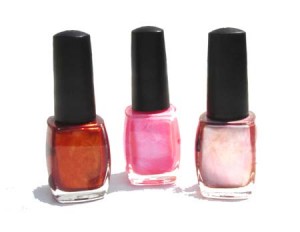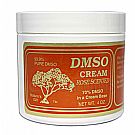Managing Hazardous Waste at Home

Much discussion is centered around toxicity in our homes—chemicals in our cleaning products; cancer-causing materials in our cosmetics and skin care products. I recently read an article published in Globe and Mail entitled “Your manicure looks beautiful. But the health effects are ugly” about the occupational hazards associated with nail salons. The article highlighted some of the hazardous materials—toluene, formaldehyde and dibutyl phthalate—found in nail polish. Not only do these chemicals have severe chronic (long-term) health hazards, each material is also considered hazardous waste. I wonder how many nail salons properly dispose of these materials? In Part One of this series “What is Hazardous Waste?” I defined hazardous waste and discussed how companies can identify hazardous wastes. Today, I will review some common household hazardous wastes.

Many think that a material’s availability as a consumer product is an indication of its safety; this could not be further from the truth as seen by the nail polish example. This weekend, while visiting a relative I noticed DMSO (dimethyl sulfoxide) in the bathroom cabinet. I questioned the use of this material and was informed it was used as an alternative treatment for hip pain. I quickly referenced the Material Safety Data Sheet (MSDS) for DMSO which indicates it is teratogenic (capable of causing birth defects), mutagenic (potential to change the genes or chromosomes) and carcinogenic (cancer-forming). Now that my relative has been informed of the dangers of this material how do you think it will be disposed? Most likely it will be thrown in the trash, toilet or sink. After reviewing the MSDS I determined that DMSO is not a characteristic or listed hazardous waste. Its flashpoint is 189 degrees Fahrenheit and it is not listed in the regulation so technically it’s not a hazardous waste; but considering its health hazards is certainly not a chemical that should be discarded with general trash or thrown down the drain. While wastewater from our toilets and drains is treated at the local wastewater treatment plant many of the chemicals from household disposal remain after treatment. This means they are redistributed into our drinking water supply or discharged into our waterways. This type of news can be disheartening, but with sustainability efforts and green chemistry becoming the focus of much media coverage the tide slowly turning. Groups like the Environmental Working Group (www.ewg.org) and Washington Toxics Coalition (www.watoxics.org) have shed light on issues arising from the mismanagement and overuse of chemicals in consumer products. This leads to the question: Which household products are most likely hazardous? Following is a table list of likely suspects:
Aerosols Ammonia Ammunitions
Fireworks Pesticides Photo Chemicals
Aerosols Ammonia Ammunitions
Fireworks Pesticides Photo Chemicals
Antifreeze Gasoline Propane
Herbicides Pesticides Pool Chemicals
Nail Polish Auto Batteries Boat Batteries
Kerosene Charcoal Fluid Fertilizer
Rust Remover Solvents Wood Stains
Motor Oil Polish Remover Paint Thinners
Fire Extinguishers Drain Cleaners Mercury Thermometers
Do you want to manage hazardous waste at your home properly? Most states, counties and/or municipalities have household hazardous waste or chemical collection programs. Unlike garbage collection residents are typically required to bring the waste to the location. In South Florida, Broward County offers a household hazardous waste program and Miami Dade County offers a Home Chemical Collection Program. Although not required these are programs that foster a cleaner environment. I hope you will give one in your area a try!
Do you have other examples of hazardous household materials? If so, please leave a comment here.

2 Replies to “Managing Hazardous Waste at Home”
Comments are closed.